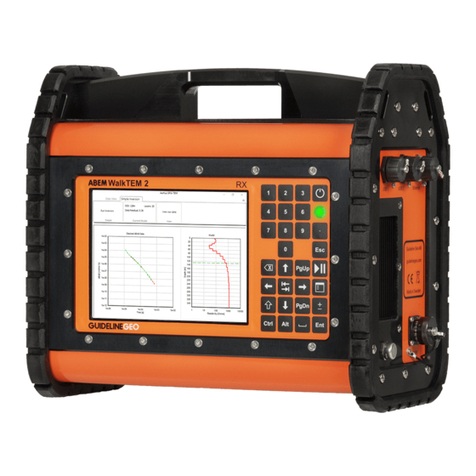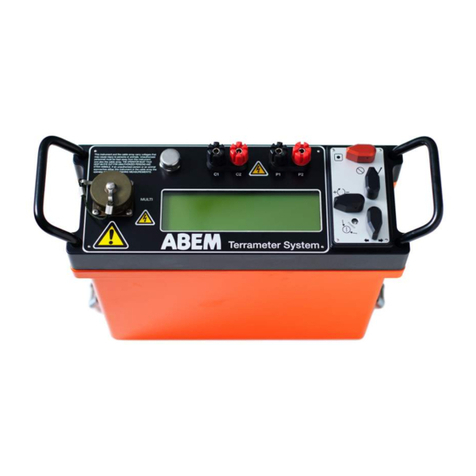ABEM Terrameter LS
ii
5 Measurement Preparation ................................................................................35
5.1 Save Field Time by Doing t e Rig t Preparations ......................................35
5.2 Preparing Data Acquisition..........................................................................35
6 Measurement Procedures..................................................................................42
6.1 General.........................................................................................................42
6.2 Essential Equipment.....................................................................................42
6.3 Recommended Additional Equipment.........................................................43
6.4 Setting up t e Hardware...............................................................................43
6.5 2D Electrical Imaging ..................................................................................44
6.6 3D Imaging by Means of a Number of 2D Layouts ....................................46
6.7 3D Imaging by Electrode Grid Layouts.......................................................47
6.8 Bore ole-bore ole Tomograp y..................................................................47
6.9 Performing Data Acquisition .......................................................................48
6.10 Vertical Electrical Sounding ........................................................................57
6.11 Full Waveform Data ....................................................................................64
6.12 Measurement Errors.....................................................................................64
7 Measurement Post Production .........................................................................67
7.1 Repack t e LS system..................................................................................67
7.2 Export Measurement Data ...........................................................................67
7.3 Delete a Project ............................................................................................71
8 Terrameter LS Utility Software .......................................................................72
8.1 Instrument Network Address .......................................................................72
8.2 Spread and Protocol Handling .....................................................................73
8.3 Data Transfer ...............................................................................................77
8.4 View and Export Data..................................................................................79
8.5 Update Terrameter LS Instrument Software................................................83
8.6 Erigrap ........................................................................................................84
9 Testing, Diagnostics and Error Search ............................................................85
9.1 Self Test .......................................................................................................85
9.2 Cable Continuity Test ..................................................................................85
9.3 Cable Isolation Test .....................................................................................86
9.4 Remote Diagnostics .....................................................................................87
9.5 In Case of Malfunction ................................................................................88
10 Appendix A. Technical Specification ...........................................................89
10.1 General.........................................................................................................89
10.2 Measuring ....................................................................................................89
10.3 Receiver .......................................................................................................89






























